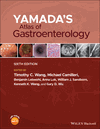Intraabdominal abscesses and fistulas
Summary
This chapter offers diverse images that provide an overview of intraabdominal abscesses and fistulas and aims to provide a synopsis through pictures and illustrations rather than through text. Intraabdominal abscesses and fistulas occur due to a septic process within the abdominal cavity and are often interconnected. They can cause significant effects on health and quality of life. Accurate diagnosis requires clinical acumen and appropriate imaging while management needs multidisciplinary expertise. Intraabdominal abscesses are contained areas of infection, which present as pockets of pus within the abdominal cavity. Gastrointestinal fistulas commonly occur in association with abscesses. The vast majority of gastrointestinal fistulas are acquired as a result of previous abdominal surgery. Advances in imaging technology have revolutionized the diagnosis and assessment of intraabdominal abscesses and fistulas. Contrast-enhanced computed tomography accurately detects abscess cavities and allows percutaneous drainage. Magnetic resonance imaging is of particular use in patients with fistulas and when anatomical detail is needed.



